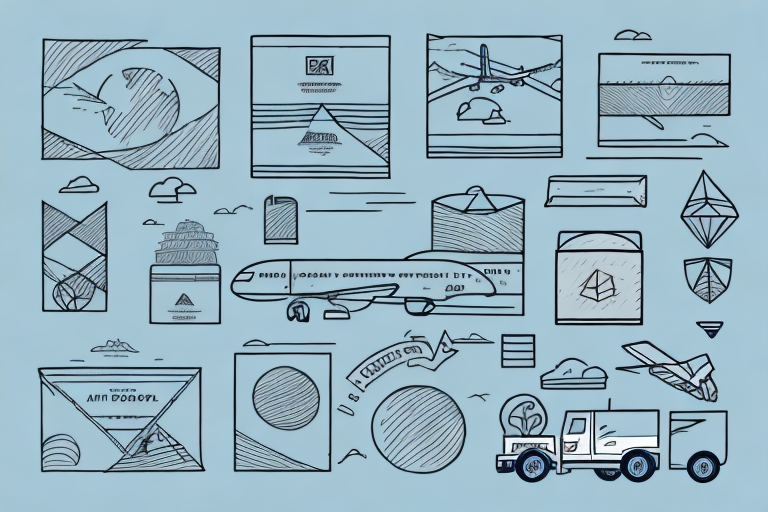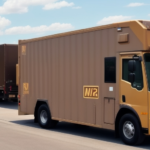Is Ground Shipping Faster Than Other Shipping Methods?
Shipping is a critical component for businesses aiming to reach customers both domestically and internationally. Selecting the appropriate shipping method ensures timely delivery, customer satisfaction, and cost efficiency. This comprehensive guide examines whether ground shipping is faster than other shipping methods and provides insights to help businesses make informed decisions.
Understanding the Different Shipping Methods
Businesses typically choose from three primary shipping methods: ground, air, and sea. Each method offers unique advantages and drawbacks, making them suitable for different scenarios.
Ground Shipping
Ground shipping utilizes trucks, vans, or other land-based vehicles to transport goods. It is commonly used for domestic shipments and offers a balance between cost and speed.
Air Shipping
Air shipping involves transporting goods via airplanes, making it the fastest shipping method available. It is ideal for time-sensitive deliveries but comes with higher costs.
Sea Shipping
Sea shipping uses cargo ships to transport goods over water, making it the most cost-effective option for large and bulky international shipments. However, it generally has the longest transit times.
Advantages and Disadvantages of Each Shipping Method
Evaluating the pros and cons of each shipping method is essential for selecting the best option for your business needs.
Ground Shipping
- Advantages:
- Cost-effective for domestic shipments
- More environmentally friendly with lower emissions
- Suitable for large volumes with potential for negotiated rates
- Disadvantages:
- Longer transit times compared to air shipping
- Susceptible to weather and traffic delays
- Restrictions on size and weight of shipments
Air Shipping
- Advantages:
- Fastest shipping method available
- Ideal for time-sensitive and high-value products
- Disadvantages:
- High transportation costs
- Larger carbon footprint contributing to environmental concerns
- Limited by flight schedules and potential weather disruptions
Sea Shipping
- Advantages:
- Most cost-effective for international and large-scale shipments
- Capable of handling bulky and heavy goods
- Disadvantages:
- Longest transit times among shipping methods
- Potential for weather-related delays and cargo damage
- Requires meticulous packaging and handling
Comparison of Transit Times and Costs
Understanding the differences in transit times and costs across shipping methods helps businesses align their logistics with their operational priorities.
Transit Times
- Ground Shipping: Typically ranges from 1-7 business days for domestic shipments.
- Air Shipping: Usually 1-3 business days, making it the fastest option.
- Sea Shipping: Can take several weeks, depending on the distance and route.
Cost Considerations
- Ground Shipping: Generally the most affordable for short to medium distances.
- Air Shipping: Highest cost due to speed and fuel expenses.
- Sea Shipping: Cost-effective for large and heavy shipments despite longer transit times.
According to the World Bank, shipping costs can vary significantly based on fuel prices, demand, and geopolitical factors, impacting the overall cost-effectiveness of each method.
Factors Affecting Transit Times
Several elements influence how quickly shipments reach their destination, regardless of the chosen shipping method.
Ground Shipping Factors
- Distance between origin and destination
- Traffic congestion and road conditions
- Carrier's delivery schedule and routing efficiency
- Type of goods, including packaging and handling requirements
Air Shipping Factors
- Availability and frequency of flights
- Distance and international borders requiring customs clearance
- Weather conditions affecting flight schedules
- Seasonal demand fluctuations, such as holiday periods
Sea Shipping Factors
- Shipping routes and port of entry efficiency
- Weather conditions impacting sea travel
- Volume of cargo and port congestion
- Security measures and regulatory compliance
Choosing the Best Shipping Method for Your Business
To select the most suitable shipping method, businesses should evaluate the following:
- Cost: Align shipping expenses with budget constraints.
- Speed: Determine how quickly products need to reach customers.
- Product Characteristics: Consider size, weight, and fragility of goods.
- Environmental Impact: Assess the carbon footprint of each shipping method.
- Reliability: Evaluate the consistency and dependability of carriers.
Utilizing a hybrid approach, combining different shipping methods based on specific needs, can also optimize both cost and efficiency.
Case Studies: When Ground Shipping is Faster and When Others Are
Real-world examples highlight scenarios where one shipping method outperforms others:
Ground Shipping Advantages
A company delivering perishable goods within a single country found ground shipping faster and more reliable than air shipping, avoiding the delays associated with flight schedules and customs processing.
Air Shipping Advantages
An electronics retailer required urgent delivery of high-demand products during a promotional event. Air shipping ensured products reached customers promptly, enhancing customer satisfaction and sales.
Sea Shipping Advantages
A manufacturer exporting heavy machinery internationally opted for sea shipping to reduce costs, accepting longer transit times in exchange for significant savings on transportation expenses.
Tips for Expedited Ground Shipping
For businesses prioritizing speed without incurring the high costs of air shipping, expedited ground shipping offers a viable alternative.
- Optimize Packaging: Use standardized packaging to streamline handling and reduce delays.
- Utilize Regional Carriers: Partner with local carriers who offer faster transit times within specific areas.
- Leverage Technology: Implement shipment tracking and route optimization software to enhance efficiency.
- Negotiate Rates: Secure favorable rates with carriers based on shipment volume for cost savings.
The Role of Technology in Improving Shipping Speeds and Transit Times
Advancements in technology have significantly enhanced the efficiency and reliability of shipping methods:
- Real-Time Tracking: Enables businesses and customers to monitor shipments, reducing uncertainty and improving transparency.
- Automated Sorting Systems: Increase processing speed and accuracy in distribution centers.
- Route Optimization Software: Identifies the most efficient delivery routes, minimizing transit times and fuel consumption.
- Artificial Intelligence: Predicts demand patterns and optimizes inventory management, ensuring timely fulfillment of orders.
According to a report by McKinsey & Company, the integration of AI and machine learning in logistics can reduce delivery times by up to 30%, showcasing the transformative potential of technology in the shipping industry.
Conclusion
Choosing the optimal shipping method depends on a balance between cost, speed, and the specific needs of your business. While ground shipping is not the fastest option, it offers a cost-effective and reliable solution for many domestic and regional shipments. By thoroughly assessing the advantages and disadvantages of each shipping method, considering factors that affect transit times, and leveraging technological advancements, businesses can enhance their shipping strategies to meet customer demands efficiently and sustainably.




















